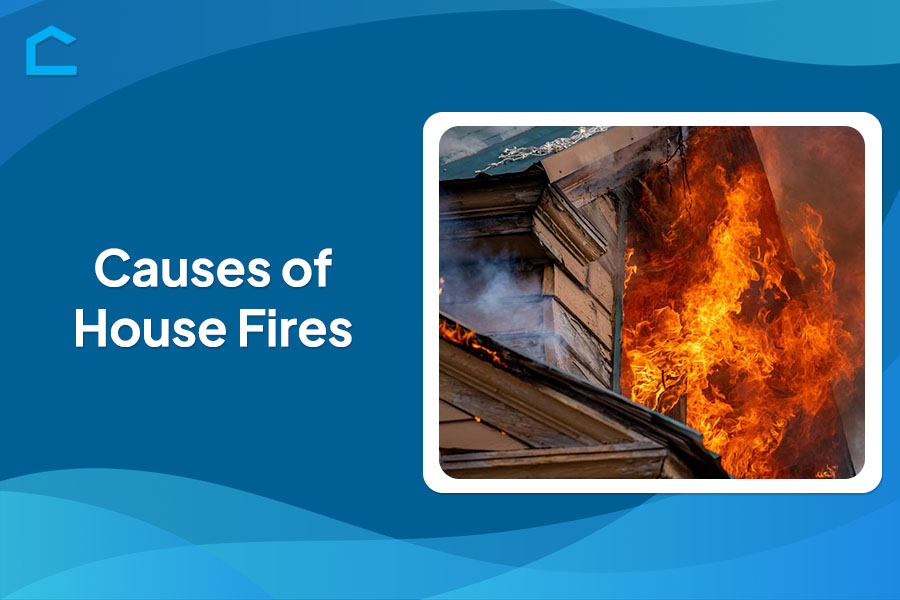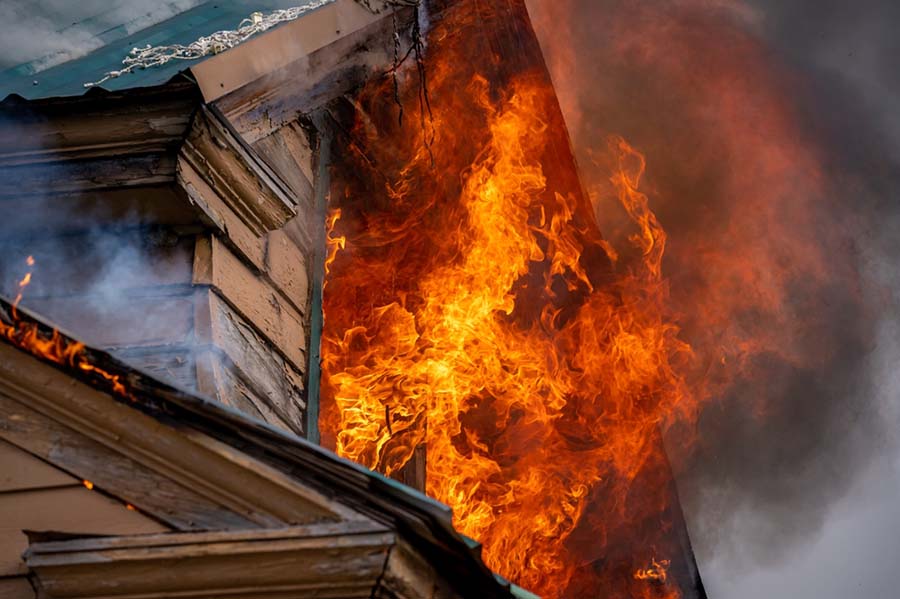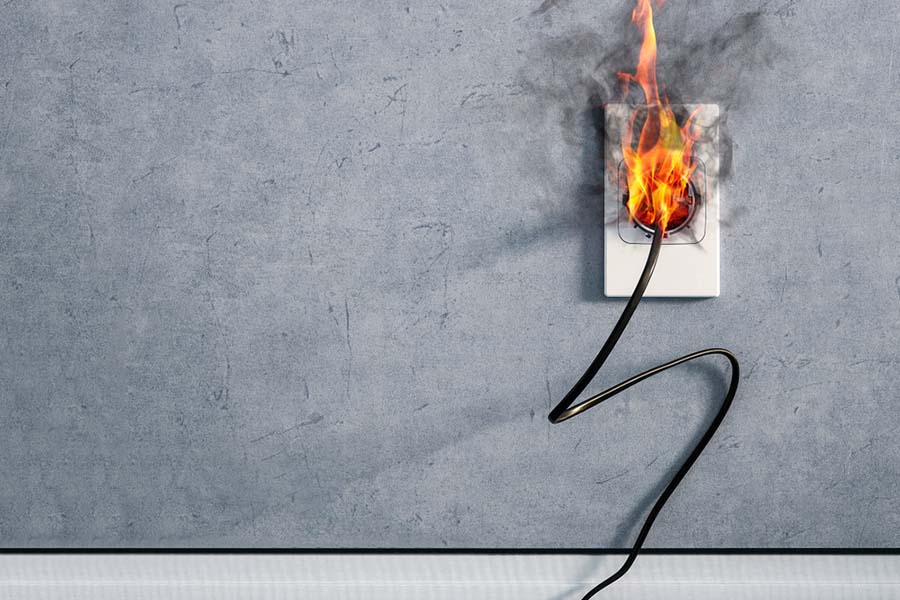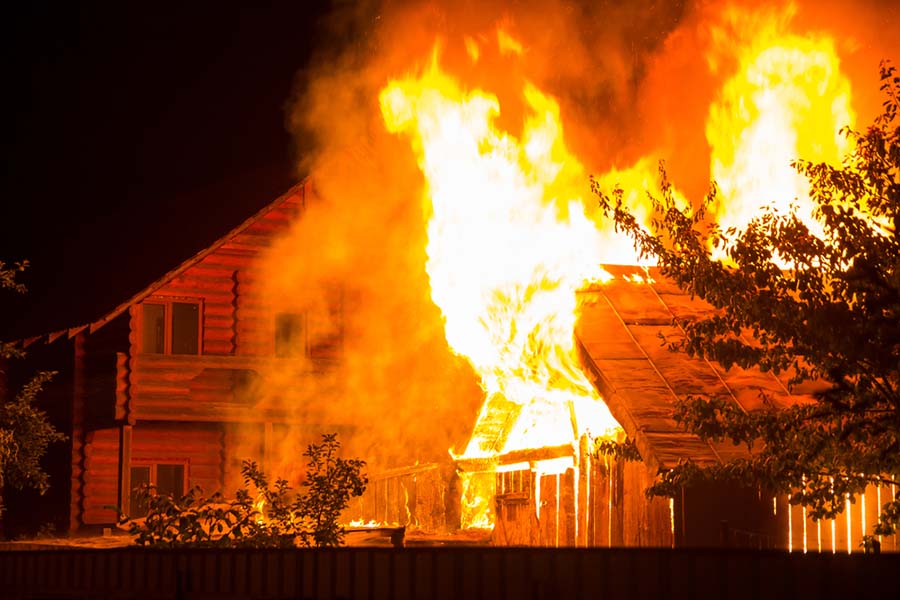Causes of House Fires

House fires are among the most distressing and potentially catastrophic events homeowners fear. These incidents may result in property damage and pose significant risks. Understanding the common causes of house fires is crucial for prevention and ensuring the safety of homes and their inhabitants.
Many factors can contribute to the ignition and rapid spread of fires within residential settings, from everyday appliances to human error. So, we will explore some of the primary causes of fires, shedding light on the importance of proactive measures and awareness in mitigating these risks.

Source: shutterstock.com / Photo Contributor: My Photo Buddy
Top 8 Causes of House Fires
Cooking accidents
Cooking fires often start when you leave food unattended. You might get distracted and forget about what’s on the stove or in the oven. Grease fires are especially risky because they might quickly spread.
To prevent these fires, you must stay in the kitchen while you cook. Have a fire extinguisher nearby; never use water on a grease fire—it can worsen things.
Always watch the stove or oven closely and turn off appliances when you’re done. Also, keep flammable items away from cooking areas. We advise you to install smoke alarms near the kitchen and check them often to ensure they work.
Heating equipment
Equipment such as space heaters, furnaces, and fireplaces might pose fire hazards if used incorrectly. Placing combustible materials too close to heating sources might also increase the risk significantly.
One of the most important ways to avoid fires is to do routine maintenance, such as cleaning chimneys and checking heating systems. Plus, you should keep space heaters at least 3 feet away from anything flammable to stay safe. And have chimneys and fireplaces inspected and cleaned regularly.
We suggest avoiding using ovens or stoves for heating purposes, as they aren’t designed for it and can be fire hazards. Lastly, you must ensure all heating equipment is installed and maintained according to the manufacturer’s instructions.
Electrical malfunctions
Electrical malfunctions are also among the most common fire hazards at home. These include faulty wiring, overloaded circuits, and outdated electrical systems. Such issues can lead to sparks that may ignite nearby flammable materials.
Old electrical systems, in particular, might not meet current safety standards, thereby increasing the risk of fires. To prevent these hazards, it’s crucial to have your electrical systems inspected regularly by professionals. Consider replacing outdated systems and avoid overloading circuits with too many devices.
Additionally, you must stay alert for warning signs such as flickering lights or frequent circuit breaker trips, as these might indicate underlying electrical problems. For peace of mind, hiring a licensed electrician to conduct regular safety checks and address potential hazards is highly recommended.

Source: shutterstock.com / Photo Contributor: NothingIsEverything
Smoking
Improperly discarded cigarettes and smoking materials often start house fires. Cigarette butts can smolder and ignite flammable items like furniture or curtains nearby. To reduce this risk, never smoke in bed or when feeling drowsy.
You should always use deep, sturdy ashtrays and douse cigarette butts with water before disposing of them. You can also consider smoking outside to further minimize the risk of indoor fires.
Candles
You should be cautious with candles because open flames might cause house fires, especially if left alone or near flammable items such as curtains or furniture. To use candles safely, never leave them unattended and keep them away from anything that can catch fire. We recommend using sturdy candle holders that won’t easily tip over.
Alternatively, consider using battery-operated or flameless candles, which are safer than traditional ones. And make sure to fully extinguish candles before leaving the room or going to bed.
Faulty appliances
Another common cause is malfunctioning appliances. These appliances, such as dryers, stoves, and refrigerators, may start fires due to overheating or electrical issues. You can identify malfunctioning appliances by unusual noises, smoke, or burning smells.
To prevent appliance-related fires, clean lint traps and vents regularly. Also, have a professional inspect and service your appliances. Don’t forget to replace old or faulty appliances promptly to reduce fire risks.
On top of that, unplug and stop using any appliance that shows signs of malfunction until it can be repaired or replaced. You need to ensure all appliances are properly installed and used according to the manufacturer’s instructions.
Flammable liquids
Storing and using flammable liquids like gasoline and cleaning products might also increase the risk of house fires. The vapors from these liquids are highly flammable, and even a small spark may ignite them. To use these liquids safely, store them in approved containers away from any ignition sources.
We advise you not to use flammable liquids near open flames or while smoking. However, if you do, ensure proper ventilation and keep them away from heat sources as well as out of the reach of children. Whenever possible, consider using non-flammable alternatives to minimize the risk of fires.

Source: shutterstock.com / Photo Contributor: Bilanol
Holiday decorations
Festive holiday decor brings warmth and cheer, but it’s wise to consider fire safety. A dry Christmas tree might easily catch fire, so choose a fresh one and keep it well-watered.
Before placing them, inspect your light strings carefully and replace any with frayed wires or damaged sockets. You can consider using LED lights and flameless candles as safer alternatives to traditional decorations with open flames.
When decorating, place your items away from heat sources, and never leave burning candles or lights unattended. This way, you can enjoy the holiday ambiance while minimizing fire risks by taking a few precautions.
Conclusion
Protecting your home and loved ones from the devastation of a house fire requires vigilance and proactive measures. By understanding the common causes of house fires outlined in this article, such as cooking accidents and faulty appliances, you can take steps to minimize risks.
The same applies to hazards like candles and holiday decorations. Implement fire safety practices, maintain equipment properly, and be mindful of potential hazards. Remember, a little prevention goes a long way in reducing the chances of a life-altering house fire.
Stay educated, remain cautious, and don’t hesitate to seek professional assistance when needed. With knowledge and diligence, you can create a safer living environment and safeguard your property and family from the tragic consequences of residential fires.
